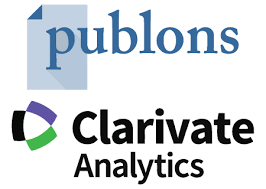L' Influence dynamique de la séparation des fonctions de Président du Conseil d'Administration et de Dirigeant sur la performance des entreprises
DOI :
https://doi.org/10.59051/joaf.v11i1.363Mots-clés :
Séparation des fonctions, Théorie de l’agence, Théorie stewardship, Sociétés non-financières cotées, Performance .Résumé
La question du lien entre les caractéristiques du conseil d’administration et la performance des firmes continue d’être objet de débat (Abdeljawad & Masri, 2020; Alves, 2020). Deux différentes théories ont émergé de la littérature sur la dualité de rôle du conseil d’administration. La théorie de l'agence (Fama & Jensen, 1983) préconise que le cumul des fonctions de Président du Conseil d’Administration (PCA) et de Directeur Général (DG) affecte négativement les performances de l’entreprise, parce que cette pratique augmente le risque d’actions opportunistes de la part du dirigeant qui poursuivrait ses propres intérêts au détriment de ceux des actionnaires. Cependant, la théorie stewardship (Donaldson & Davis, 1991) suggère l'effet contraire en raison de l'unité de commandement qu'elle présente. L’objectif de cet article est de déterminer l’effet de la séparation des fonctions de PCA et de DG sur la performance des sociétés cotées. En utilisant l’estimateur dynamique LSDVC sur les données de panel de 26 sociétés cotées sur la période de 2000 à 2014, des résultats significatifs sont obtenus. Ces résultats indiquent un effet négatif et significatif de la séparation des fonctions de PCA et de DG sur la performance des sociétés non-financières cotées. Ces résultats confirment ainsi la théorie stewardship et vont à l’encontre des préconisations qui sont souvent faites dans la logique de la sécurité financière.
Téléchargements
Références
Adéromou, B. R., & Sall, M. B. (2019). The Minority investor protection and corporate governance practices. Journal of Academic Finance, 10(2), 102–117.
Akbar, S., Poletti-Hughes, J., El-Faitouri, R., & Shah, S. Z. A. (2016). More on the relationship between corporate governance and firm performance in the UK: Evidence from the application of generalized method of moments estimation. Research in International Business and Finance, 38, 417‑429. https://doi.org/10.1016/j.ribaf.2016.03.009
Alipour, M., Ghanbari, M., Jamshidinavid, B., & Taherabadi, A. (2019). Does board independence moderate the relationship between environmental disclosure quality and performance? Evidence from static and dynamic panel data. Corporate Governance: The International Journal of Business in Society.
Al-Sartawi, A. M. M., & Sanad, Z. (2019). Institutional ownership and corporate governance: Evidence from Bahrain. Afro-Asian Journal of Finance and Accounting, 9(1), 101–115.
Alves, S. (2020). CEO Duality and Firm Performance: Portuguese Evidence. In Conceptual and Theoretical Approaches to Corporate Social Responsibility, Entrepreneurial Orientation, and Financial Performance (p. 227–246). IGI Global.
Ayogu, M. D. (2001). Corporate governance in Africa: The record and policies for good corporate governance. African Development Review, 13(2), 308–330.
Ayuk, E. T., & Kaboré, S. T. (2012). Wealth through integration: Regional integration and poverty-reduction strategies in West Africa (Vol. 4). Springer Science & Business Media.
Barka, H. B., & Marco, L. (2017). Le conseil d’administration : Évolution des rôles dans les mutations du capitalisme. La Revue des Sciences de Gestion, 1, 39–47.
Bazdresch, S., Kahn, R. J., & Whited, T. M. (2018). Estimating and Testing Dynamic Corporate Finance Models. The Review of Financial Studies, 31(1), 322‑361. https://doi.org/10.1093/rfs/hhx080
Belinga, R. (2016). Qui a dit que les super-PDG n’existaient pas ? Entreprises et histoire, n° 83(2), 143‑145.
Berg, S. V., & Smith, S. K. (1978). CEO and board chairman: A quantitative study of dual vs. unitary board leadership. Directors and Boards, 3(1), 34–39.
Blundell, R., & Bond, S. (1998). Initial conditions and moment restrictions in dynamic panel data models. Journal of econometrics, 87(1), 115–143.
Blundell, R., & Smith, R. J. (1990). Conditions initiales et estimation efficace dans les modèles dynamiques sur données de panel : Une application au comportement d’investissement des entreprises. Annales d’Économie et de Statistique, 20/21, 109‑123.
Bourjade, S., Germain, L., & Lyon-Caen, C. (2016). Conseils d’administration : Indépendance, collusion et conflits d’intérêts. Revue francaise d’economie, Volume XXXI (2), 3‑25.
Bova, F., Dou, Y., & Hope, O.-K. (2015). Employee ownership and firm disclosure. Contemporary Accounting Research, 32(2), 639–673.
Boyd, B. K. (1995). CEO duality and firm performance: A contingency model. Strategic Management Journal, 16(4), 301–312.
Brickley, J. A., Coles, J. L., & Jarrell, G. (1997). Leadership structure: Separating the CEO and chairman of the board. Journal of corporate Finance, 3(3), 189–220.
Bruno, G. S. (2005a). Approximating the bias of the LSDV estimator for dynamic unbalanced panel data models. Economics letters, 87(3), 361–366.
Bruno, G. S. (2005b). XTLSDVC : Stata module to estimate bias corrected LSDV dynamic panel data models.
Bun, M. J., & Kiviet, J. F. (2001). The accuracy of inference in small samples of dynamic panel data models. Tinbergen Institute discussion paper.
Chang, K., Lee, J., & Shim, H. (2018). CEO Duality and Firm Performance: Does Economic Policy Uncertainty Mediate the Relation? International Review of Finance, 19(4), 877-891.
Chang, Y.-K., Chen, Y.-L., Chou, R. K., & Huang, T.-H. (2015). Corporate governance, product market competition and dynamic capital structure. International Review of Economics & Finance, 38, 44‑55.
Coles, J. L., Lemmon, M. L., & Meschke, J. F. (2012). Structural models and endogeneity in corporate finance : The link between managerial ownership and corporate performance. Journal of Financial Economics, 103(1), 149–168.
Dang, V. A., Kim, M., & Shin, Y. (2015). In search of robust methods for dynamic panel data models in empirical corporate finance. Journal of Banking & Finance, 53, 84–98.
Dess, G. G., & Beard, D. W. (1984). Dimensions of organizational task environments. Administrative science quarterly, 52–73.
Donaldson, K., Brown, G. M., Brown, D. M., Bolton, R. E., & Davis, J. M. (1989). Inflammation generating potential of long and short fibre amosite asbestos samples. Occupational and Environmental Medicine, 46(4), 271–276.
Donaldson, L., & Davis, J. H. (1990). CEO governance and shareholder returns: Agency theory or stewardship theory. Australian graduate School of Management, University of New South wales.
Donaldson, L., & Davis, J. H. (1991). Stewardship theory or agency theory: CEO governance and shareholder returns. Australian Journal of management, 16(1), 49–64.
Duru, A., Iyengar, R. J., & Zampelli, E. M. (2016). The dynamic relationship between CEO duality and firm performance: The moderating role of board independence. Journal of Business Research, 69(10), 4269‑4277. https://doi.org/10.1016/j.jbusres.2016.04.001
Ehikioya, B. I. (2009). Corporate governance structure and firm performance in developing economies: Evidence from Nigeria. Corporate Governance: The international journal of business in society, 9(3), 231‑243. https://doi.org/10.1108/14720700910964307
Elsayed, K. (2007). Does CEO Duality Really Affect Corporate Performance? Corporate Governance: An International Review, 15(6), 1203‑1214. https://doi.org/10.1111/j.1467-8683.2007.00641.x
Fama, E. F., & Jensen, M. C. (1983). Separation of ownership and control. The journal of law and Economics, 26(2), 301–325.
Feki, A., & Khoufi, W. (2008). L’effet des caractéristiques du conseil d’administration et de la qualité de l’information financière sur le coût de la dette (Cas des entreprises industrielles françaises). LA COMPTABILITE, LE CONTRÔLE ET L’AUDIT ENTRE CHANGEMENT ET STABILITE, CD–Rom.
Foureault, F. (2018). Un PDG détrôné par la finance ? Terrains travaux, N° 33(2), 101‑126.
Ginglinger, E., Megginson, W., & Waxin, T. (2011). Employee ownership, board representation, and corporate financial policies. Journal of Corporate Finance, 17(4), 868–887.
Godard, L., & Schatt, A. (2000). Quelles sont les caractéristiques optimales du conseil d’administration? La Revue du Financier, 127, 36–47.
Hirsch, P., Michaels, S., & Friedman, R. (1987). Is Sociology in Danger of Being Seduced by Economics. Theory and Society, 16(3), 317–36.
Jensen, M. C. (1993). The modern industrial revolution, exit, and the failure of internal control systems. the Journal of Finance, 48(3), 831–880.
Jensen, M. C., & Meckling, W. H. (1976). Theory of the firm: Managerial behavior, agency costs and ownership structure. Journal of financial economics, 3(4), 305–360.
Jumanne, B. B., & Keong, C. C. (2018). Ownership concentration, foreign ownership and corporate performance among the listed companies in East African community: The role of quality institutions. African Journal of Accounting, Auditing and Finance, 6(1), 70‑90. https://doi.org/10.1504/AJAAF.2018.091141
Khanna, T., & Palepu, K. (2000). Is Group Affiliation Profitable in Emerging Markets? An Analysis of Diversified Indian Business Groups. The Journal of Finance, 55(2), 867‑891. https://doi.org/10.1111/0022-1082.00229
Klein, A. (2002). Audit committee, board of director characteristics, and earnings management. Journal of accounting and economics, 33(3), 375–400.
Kong, Y., Famba, T., Chituku-Dzimiro, G., Huaping, S., & Kurauone, O. (2020). The Board Model Corporate Governance Mechanism and Financial Performance of Non-financial Listed Chinese Firms.
Kyereboah-Coleman, A. (2008). Corporate governance and firm performance in Africa : A dynamic panel data analysis. Studies in Economics and Econometrics, 32(2), 1–24.
Kyereboah-Coleman, A., & Biekpe, N. (2006). The relationship between board size, board composition, CEO duality and firm performance: Experience from Ghana. Corporate Ownership and Control, 4(2), 114–122.
Landsman, W. R., & Shapiror, A. C. (1995). Tobin’s q and the Relation between Accounting ROI and Economic Return. Journal of Accounting, Auditing & Finance, 10(1), 103‑118. https://doi.org/10.1177/0148558X9501000108
Lorsch, J., & Young, J. (1990). Pawns or potentates: The reality of America’s corporate boards. The Executive, 4(4), 85–87.
Michel-Kerjan, E. (2006). Vulnérabilité financière face aux « risques à grande échelle» : La parole est à la première industrie au monde.». Annales des Mines, 14–25. http://www.annales.org/site/re/2006/re43/Michel-Kerjan.pdf
Mizruchi, M. S. (1983). Who controls whom? An examination of the relation between management and boards of directors in large American corporations. Academy of Management review, 8(3), 426–435.
Muth, M., & Donaldson, L. (1998). Stewardship theory and board structure : A contingency approach. Corporate Governance: An International Review, 6(1), 5–28.
Naciti, V. (2019). Corporate governance and board of directors : The effect of a board composition on firm sustainability performance. Journal of Cleaner Production, 237, 117727.
Nguyen, T., Locke, S., & Reddy, K. (2015). Ownership concentration and corporate performance from a dynamic perspective : Does national governance quality matter? International Review of Financial Analysis, 41, 148–161.
Ningsih, R., Nirwanto, N., & Zuhroh, D. (2020). Return on Assets, Firm Value, and Good Corporate Governance : Empirical at Foreign Exchange Banks In Indonesia. MEC-J (Management and Economics Journal), 4(1), 25–32.
Pham, P. K., Suchard, J.-A., & Zein, J. (2011). Corporate governance and alternative performance measures: Evidence from Australian firms. Australian Journal of Management, 36(3), 371‑386. https://doi.org/10.1177/0312896211413035
Pi, L., & Timme, S. G. (1993). Corporate control and bank efficiency. Journal of Banking & Finance, 17(2‑3), 515–530.
Prencipe, A. (2016). Board composition and innovation in university spin-offs : Evidence from the italian context. Journal of technology management & innovation, 11(3), 33–39.
Rachdi, H., & El Gaied, M. (2009). L’Impact de l’Indépendance et de la dualité du Conseil d’Administration sur la Performance des Entreprises : Application au Contexte Américain. Revue Libanaise de Gestion et d’Économie, 2(3), 127‑150. https://doi.org/10.1016/S1999-7620(09)70018-7
Romdhane, M. (2015). Impact de la structure de propriété et de la gouvernance sur la structure du capital des entreprises Tunisiennes. Recherches en Sciences de Gestion, 108(3), 113. https://doi.org/10.3917/resg.108.0113
Shao, L. (2019). Dynamic study of corporate governance structure and firm performance in China. Chinese Management Studies.
Toe, S. D., Hollandts, X., & Valiorgue, B. (2017). La « face cachée » de l’actionnariat salarié : Etude empirique sur l’indice SBF 120 (2000-2014). Finance Contrôle Stratégie, 20‑1. https://doi.org/10.4000/fcs.1914
Tsamenyi, M., Enninful-Adu, E., & Onumah, J. (2007). Disclosure and corporate governance in developing countries: Evidence from Ghana. Managerial Auditing Journal, 22(3), 319–334.
Valérian, F. (2019). Risque et gouvernement de l’entreprise. Annales des Mines - Realites industrielles, Novembre 2019(4), 32‑34.
Vance, S. C. (1983). Corporate leadership: Boards, directors, and strategy. McGraw-Hill Companies.
Wintoki, M. B., Linck, J. S., & Netter, J. M. (2012). Endogeneity and the dynamics of internal corporate governance. Journal of Financial Economics, 105(3), 581‑606. https://doi.org/10.1016/j.jfineco.2012.03.005
Yang, T., & Zhao, S. (2014). CEO duality and firm performance: Evidence from an exogenous shock to the competitive environment. Journal of Banking & Finance, 49, 534‑552. https://doi.org/10.1016/j.jbankfin.2014.04.008
Téléchargements
Publié-e
Comment citer
Numéro
Rubrique
Licence
(c) Tous droits réservés Babarindé René ADEROMOU 2020

Cette œuvre est sous licence Creative Commons Attribution - Pas d'Utilisation Commerciale - Pas de Modification 4.0 International.
Les auteurs qui publient dans cette revue acceptent les termes suivants :
- Les auteurs conservent le droit d'auteur et accordent à la revue le droit de première publication, l'ouvrage étant alors disponible simultanément, sous la licence Licence d’attribution Creative Commons permettant à d'autres de partager l'ouvrage tout en en reconnaissant la paternité et la publication initiale dans cette revue.
- Les auteurs peuvent conclure des ententes contractuelles additionnelles et séparées pour la diffusion non exclusive de la version imprimée de l'ouvrage par la revue (par ex., le dépôt institutionnel ou la publication dans un livre), accompagné d'une mention reconnaissant sa publication initiale dans cette revue.
- Les auteurs ont le droit et sont encouragés à publier leur ouvrage en ligne (par ex., dans un dépôt institutionnel ou sur le site Web d'une institution) avant et pendant le processus de soumission, car cela peut mener à des échanges fructueux ainsi qu'à un nombre plus important, plus rapidement, de références à l’ouvrage publié (Voir The Effect of Open Access).






















